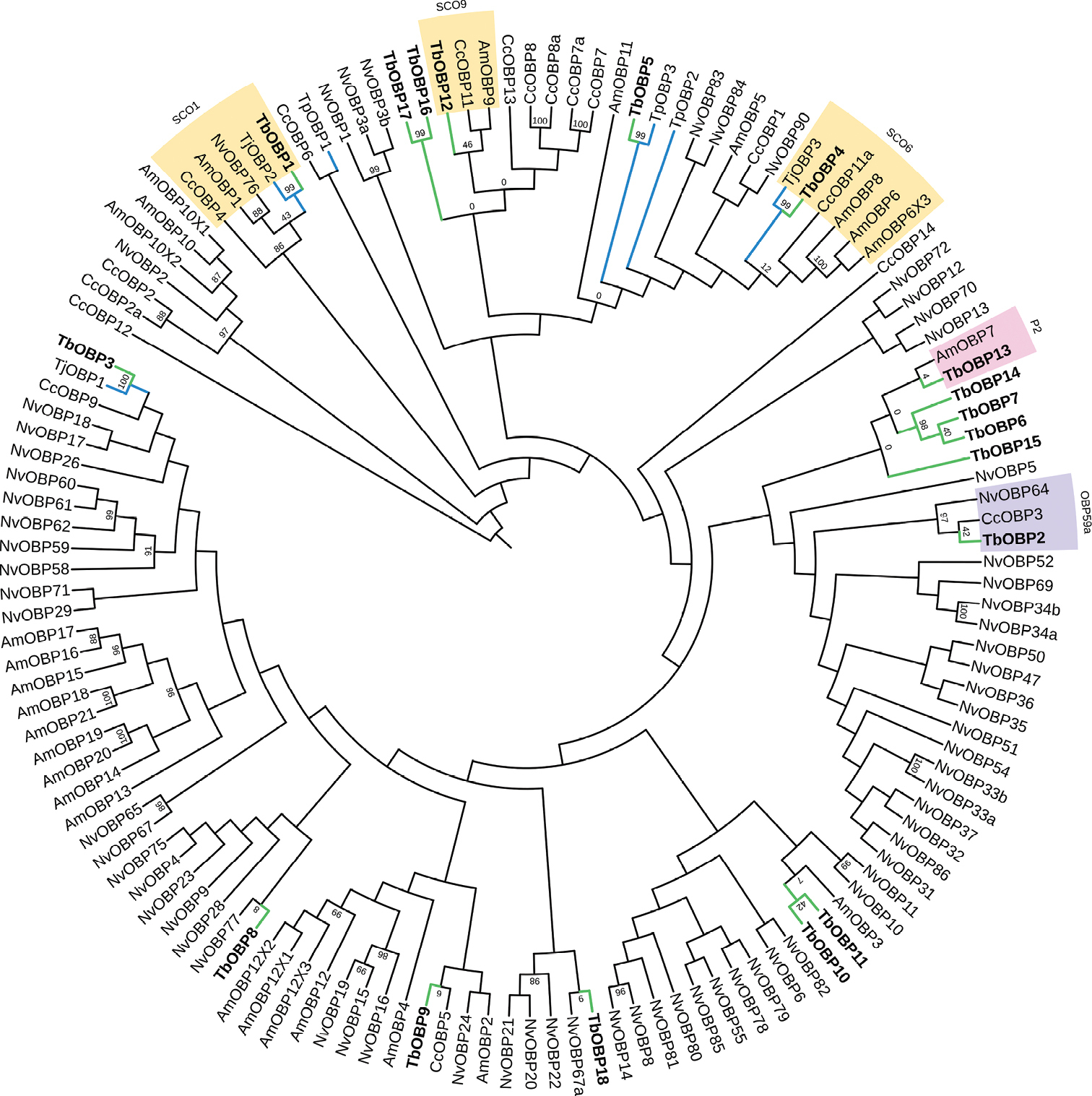
|
||
|
Maximum likelihood tree illustrating relationships among 136 OBP sequences from Nasonia vitripennis (Nv), Apis mellifera (Am), Cephus cinctus (Cc), Trissolcus japonicus (Tj), Telenomus podisi (Tp), and Trissolcus basalis (Tb). The tree is rooted with CcOBP12. TbOBPs are depicted in bold text and branches highlighted in green, other telenomine species are highlighted in blue. TbOBPs that cluster with single-copy orthologs (SCO), paralog group 2 (P2), and the OBP59a group of McKenzie et al. (2014) are highlighted in yellow, pink, and purple respectively. All bootstrap support values ≥ 85% are indicated at the relevant nodes; lower values are reported to clarify support level at other selected nodes. |